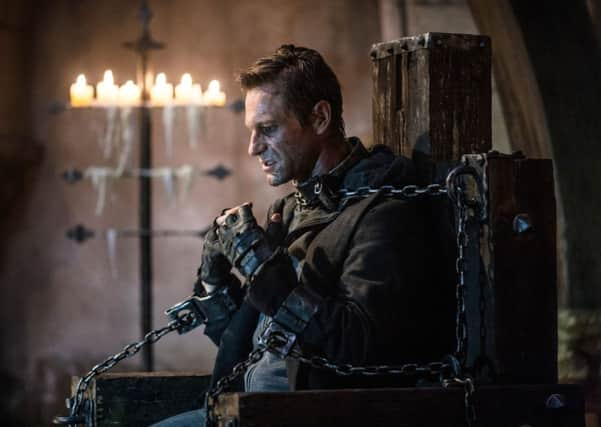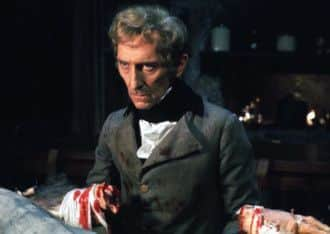Many faces of ultimate monster movie


One wet summer when Lord Byron was holidaying in Switzerland with his pal Shelley and his teenage wife Mary they whiled away the time by inventing ghost stories.
It’s to Mary’s credit that she not only upstaged the two greatest wordsmiths of the Romantic period but also produced a work of the imagination that arguably has had a more profound and more long-lasting effect on the public than anything those two ever wrote.
Advertisement
Hide AdAdvertisement
Hide AdPublished in 1818, Mary’s Frankenstein has no Gothic castles. The monster’s creator is not a doctor or a baron, and he has no hunch-backed aide scurrying around a fume-filled laboratory. He is simply Victor, a medical student.


The popular image of Frankenstein is that of Boris Karloff’s flat-headed, sallow-faced, lumbering, dead-eyed monster, first seen in the 1931 Universal movie directed by James Whale. The fact that so many associate Karloff with the name Frankenstein is interesting, given that the creator himself was actually played by Colin Clive.
However it’s the monster rather than his maker who is the enduring image and that is down to cinema.
Step forward Aaron Eckhart as Adam, Frankenstein’s creation in I, Frankenstein who, after vanishing for 200 years re-emerges to enter the fray in a modern war between rival armies of immortal demons and gargoyles. Yes, you read that correctly.
Advertisement
Hide AdAdvertisement
Hide AdProduced by the team behind the Underworld franchise and based on a graphic novel, I, Frankenstein places the focus on the monster. It’s Frankenstein, folks, but not as we know it.
Yet any film adaptation of any established classic will be someone’s interpretation, so can this genre-busting mish-mash find an appreciative fanbase? Like it or not, 21st- century audiences love their heroes to be of the super variety. And it makes for better box office.
The Frankenstein movies of the past ditched the weighty social, moral and psychological questions raised by Frankenstein’s treatment of the creature in Mary Shelley’s novel and opted instead for lightning bolts, bubbling test tubes, obsessive scientists and rampaging monsters.
In both Frankenstein (1931) and The Curse of Frankenstein (1957) elements of Shelley’s story remain, particularly in the Karloff version. But the success of both films forced their makers to plough ahead with sequels.
Advertisement
Hide AdAdvertisement
Hide AdUniversal, four years after Frankenstein, came up with The Bride of Frankenstein – a story taken directly from Shelley’s novel – in which Clive creates a mate for his creature, again played by Karloff. Universal’s idea was to replay the success of the monster, making his actions the crux of the story.
Hammer, however, moved along a different path: they created new stories around the character of Frankenstein, now a nobleman, and played with an obsessive and ruthless glint in the eye by Peter Cushing. Between 1931 and 1944, Universal turned out six films featuring the monster.
Similarly, Hammer trotted out a new Frankenstein every couple of years, invariably starring Cushing. Both studios were merely catering to public tastes. Hammer, in particular, augmented some lacklustre scripts by the addition of lurid colour cinematography as opposed to Universal’s grainy monochrome, the inclusion of visceral gore effects and by other clever, topical touches. While Dr Christiaan Barnard was transplanting the first heart, Peter Cushing had moved on to brains. The titles, too, were hardly Shelley, with Frankenstein and the Monster from Hell being a particular case in point. Twenty years ago Kenneth Branagh had a go, unveiling Mary Shelley’s Frankenstein in the same way that Francis Ford Coppola had proffered Bram Stoker’s Dracula. One had Robert De Niro. The other had Anthony Hopkins. Neither worked.
Today’s filmmakers’ unenviable task is to take a leaden, 196-year-old novel and transform it into entertainment easily digestible by today’s audiences most of whom would not have contemplated picking up the book.
Advertisement
Hide AdAdvertisement
Hide AdThey also face taking on the track record of Universal and Hammer, along with the spoofs (Young Frankenstein), the rip-offs (Scream and Scream Again), and the plain bizarre (Jesse James Meets Frankenstein’s Daughter).
Perhaps the time is right for a serious re-evaluation of Shelley’s story. If their film fails, then perhaps Eckhart and co should take stock of the possibility that, deep down, people may prefer simple plots with monsters, mad scientists and damsels in distress.
I, Frankenstein (12A) is on general release.
Frankenstein on the big screen
The first Frankenstein film was made in 1910 by Charles Edison and featured groundbreaking special effects.
Boris Karloff burst to stardom on the back of playing the monster in Frankenstein. He eventually played the role (and his creator) half a dozen times.
Advertisement
Hide AdAdvertisement
Hide AdPeter Cushing enjoyed a sort of continuity in his laboratory. He made six films over 17 years for Hammer and even provided a cameo in a Sammy Davis comedy. Sir Christopher Lee made a mute breakthrough as the creature in The Curse of Frankenstein and likened the make-up on his face to a car accident.